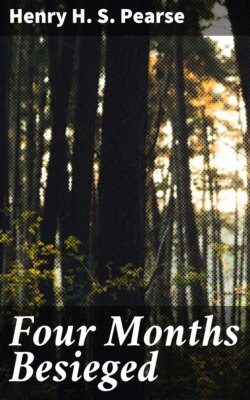Читать книгу Four Months Besieged - Henry H. S. Pearse - Страница 8
На сайте Литреса книга снята с продажи.
The declaration of war—Sir George White and the defence of Natal—The force at Glencoe—Battle of Talana Hill—General Yule's retirement—Battle of Elandslaagte—Useless victories—Enemy's continued advance.
ОглавлениеBefore taking up the history of the siege proper it will be well here to pass briefly in review the events which led up to the isolation and investment of Ladysmith. When war was declared by the Government of the Transvaal in its despatch of the 9th October 1899, it found Her Majesty's Government in very great measure unprepared. A month earlier, however, reinforcements of 10,000 troops had been ordered to Natal from India and elsewhere, and the major part of these were already in the Colony. General Sir George White, who had arrived at Durban on 7th October, had strongly advocated the abandonment of the northern district of Natal, but allowed himself to be overborne by the urgent representations of Sir W.F. Hely-Hutchinson, who believed the withdrawal would involve grave political results. Sir William Penn Symons believed that the districts in question could be defended by a comparatively small force, and he was allowed to make the experiment. At that time there were with him at Glencoe three battalions of infantry, a brigade division of the Royal Artillery, the 18th Hussars, and a small body of mounted infantry. The enemy crossed the borders immediately upon the expiry of the term stipulated in the ultimatum, and on the 20th October was fought the battle of Talana Hill.
This first battle of the campaign demonstrated at once the soundness of Sir George White's views. General Symons's little army worthily maintained the military traditions of their race, and in the face of a terrible fire from modern rifles, in the hands of the stubbornest of foes, rushed the enemy's position and swept him from the heights. But victory demanded heavy toll. The gallant commander nobly expiated the mistaken judgment which had led him so seriously to underrate the strength of the invaders, and nearly forty officers killed, wounded, and taken prisoners, figured on a list of about 430 casualties. So heavy a price was paid for a brief success and the knowledge that the enemy was too strong to make it safe to hold the Glencoe position longer.
General Yule, who now took command of the column, abandoned his camp on the 22nd October, and withdrew by a circuitous route to Ladysmith, which was reached on the 26th. In the meantime, however, on the 21st, the Boers marched from the north-west, having cut the railway and captured a train of supplies at Elandslaagte to the north of Ladysmith. Sir George White therefore ordered out a force, under General French, to clear them from the line and to restore communication. Here again the hostile positions were stormed with reckless gallantry, and the Boers were swept back in headlong flight, suffering heavy losses. But again our loss, especially in officers, was very serious, and again it soon became apparent that victory, quite apart from the price of it, had not improved our position. The Boers, thrust back for the moment at one point, steadily continued their advance. General White's force was again engaged on the 24th October, when, in order to prevent the enemy crossing the Newcastle road from west to east, and falling on the flank of General Yule's retiring column, an attack was made in force upon the enemy at Rietfontein, near Elandslaagte, and the Boers, after six hours' fighting, were driven from the hills.
The object aimed at was thus secured. Whether, had the effort been pushed home, a definite check might at this stage have been imposed upon the Boer advance, is doubtful. Stopping where it did, it did not prevent the steady and unceasing movements of the enemy to surround Ladysmith. One more fight and they were to circle the town in a ring of metal which was long to withstand all the blows that could be levelled against it. The battle of Lombard's Kop, or Farquhar's Farm, as it is officially styled, ended in disaster to the British arms, and drew tight the threads in the entanglement of Ladysmith. The evil fortunes of the day were described vividly by Mr. Pearse in a letter written on the following day.
